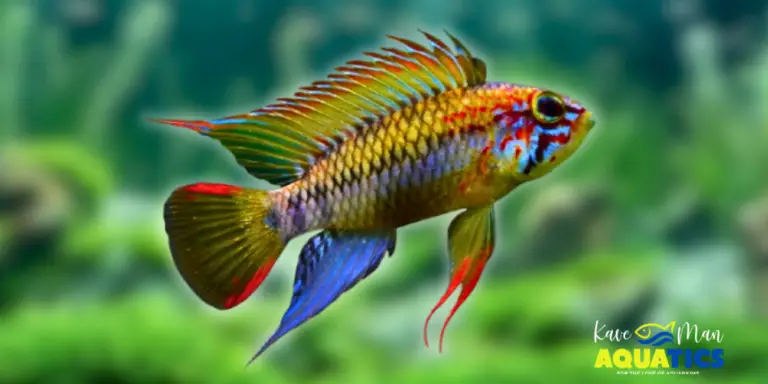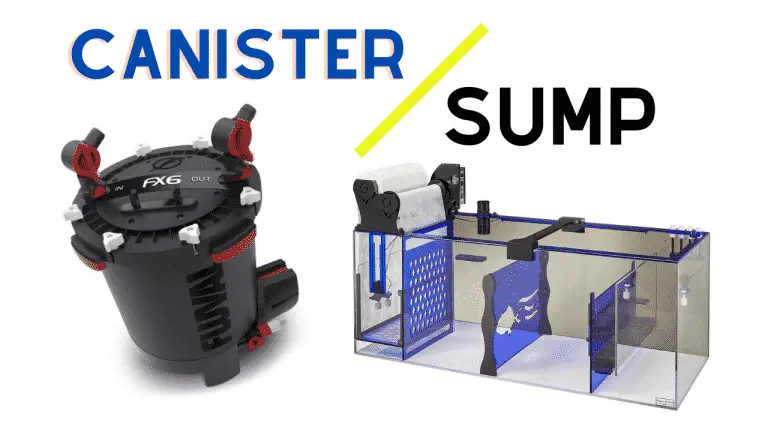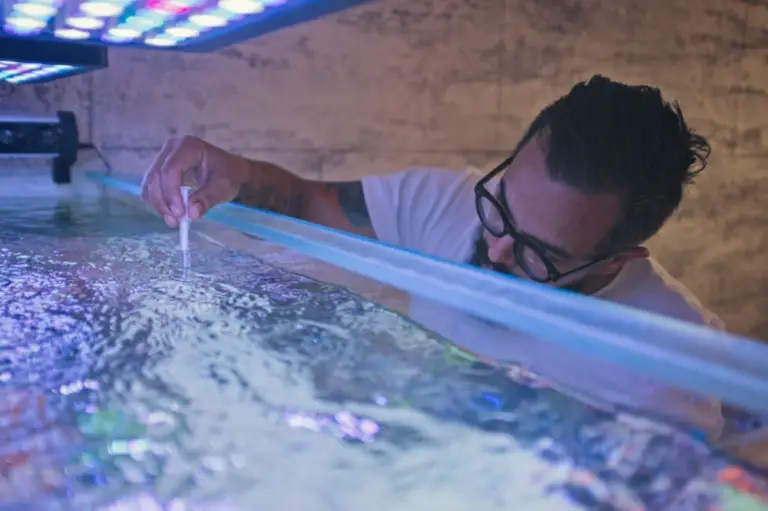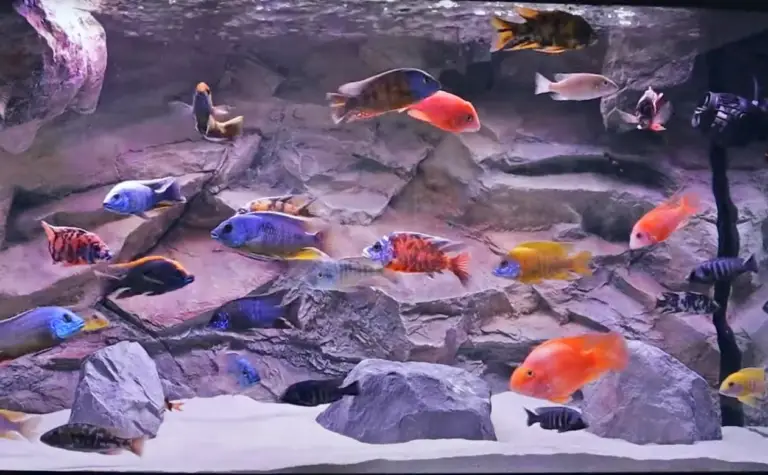Nitrate Poisoning in Freshwater Aquarium Fish (+8 Easy Prevention Tips)
Excessive nitrate in aquariums is frequently misinterpreted by aquarium enthusiasts and can lead to nitrate poisoning — which can kill aquarium fish. Nitrate is chemically identical to nitrite in that both are composed of oxygen and nitrogen molecules, however, nitrate is a less reactive substance.
Nitrite has just two nitrogen atoms for every oxygen atom —making it a more reactive molecule, whereas nitrate has three nitrogen atoms for every oxygen atom. Nitrate is a natural byproduct of fish waste and the final product of the nitrogen cycle, and it will accumulate in any tank that is not properly managed.
Nitrate Poisoning vs. Nitrate Shock
Nitrate poisoning is known by two different names depending on the severity of the exposure: nitrate poisoning refers to a chronic problem. In contrast, nitrate shock refers to an acute problem that happens suddenly.
What Is Nitrate Poisoning?
Nitrate poisoning occurs when fish are subjected to steadily growing nitrate levels over an extended period of time when normal tank maintenance is not carried out.
Overfeeding and overstocking of fish are also key contributors to nitrate levels slowly growing. But be aware of other sneaky causes of increased nitrate levels — like old tank syndrome.
When steps are not taken to reduce nitrate levels — like utilizing a regular maintenance schedule — the cumulative effect can be fish death. Some fish will be affected by levels as low as 20 mg/L while others will show no apparent symptoms until levels have reached several hundred mg/L.
Juvenile fish are affected at the lower levels, as are saltwater fish. For most aquariums, it is recommended to keep the nitrate level below 20-40 mg/L by performing regular water changes.
What Is Nitrate Shock?
Nitrate shock occurs when fish are suddenly exposed to a drastically different quantity of nitrate, which can range from several hundred mg/L to several thousand mg/L. When fish are transplanted from one aquarium with normal nitrate levels to another with high levels, this happens. Although nitrate shock generally refers to a fast spike in nitrate levels, fish can also be stunned if nitrate levels drop dramatically.
Symptoms and Mortality
New and sudden behaviors in your fish may indicate that they may be dealing with a nitrate problem in your tank over the past 24-48 hours:
- Appetite loss
- Rapid gill movement, rapid respiration
- Dazed appearance, listlessness
- Disorientation and loss of balance
- Lying on the tank floor
- Head-to-tail curling (advanced stages)
When nitrate levels gradually increase over time, it’s not uncommon for only one or two fish to develop symptoms at first. Until water tests are completed to check the water’s chemistry, there may be no obvious explanation for why certain fish become unwell. More fish will begin to display symptoms if nitrate levels are not decreased. Fish death will eventually happen — usually over a few days to a few weeks.
When fish are unexpectedly exposed to extremely high nitrate levels, they generally die within 24 hours. Owners are frequently unaware of the condition until the fish are dead or near death. In these cases, emergency remedies can be taken for affected fish, but the cause of the problem must be identified and removed to avoid more tragedy before adding new fish to the tank.
To combat this common issue, a continuous sensor that provides constant nitrate readings will help save your fish. The Seachem Ammonia Alert uses sensor technology that continuously detects and monitors free ammonia. Here’s the product in action:
Emergency Treatment
Most fish will not perish suddenly if they’re gradually exposed to high nitrate levels. It’s feasible to minimize the effect of nitrate poisoning in circumstances of sudden exposure to excessive nitrate, providing the fish with a fighting chance of survival. Perform a water change and test the water for ammonia, nitrite, and nitrate levels. Ammonia and nitrite levels should be nil, while nitrate levels should be less than 10-20 mg/L.
Otherwise, save your fish and reduce nitrate levels now:
How to Bring Down Nitrate Levels
Slow, regulated water changes will be required to reduce nitrate levels. The first step toward a successful water change is to test the water for nitrate levels. This will give you an indication of how many adjustments are likely to be required. Quick-test strips will give you an indication of your progress, but test kits — like the API Freshwater Master Test Kit — that use chemical reagents will give you more exact results.
The key to safely changing out contaminated water during a poisoning outbreak is to avoid another sudden shift that would put too much chemical gradient stress on already stressed fish. Nitrate levels in a freshwater aquarium should ideally be kept below 20 mg/L. Any modifications, however, should be gradual, with no more than 50 mg/L of nitrate removed every day.
If ammonia and nitrite levels are low and only nitrate is high, conduct many subtle water changes. The greatest rate of concentration change that freshwater fish can endure is a 5% water change every hour or two when utilizing nitrate-free water. Rep this process until you have refilled around half of the total gallonage of water in your aquarium. This procedure will considerably lower nitrate levels, but slowly enough to prevent the impacts of abrupt changes on the fish.
Continue to Re-Test Levels
Re-test the water after the water change to see how much the nitrate levels have fallen. If the nitrate level remains above 100 mg/L the next day, repeat the procedure. Continue to change the water until the nitrate level has been lowered to 20 mg/L or below. If nitrate levels remain high, mainly due to leaching from filter media, substrate, or plants, nitrate-removing filter media can be utilized.
Seachem Matrix can also be added to the aquarium water. We put Seachem Matrix to the test and here are the results:
Preventing Nitrate Poisoning
Once the nitrate levels have returned to normal, it’s critical to carefully manage the aquarium water to avoid another nitrate crisis. To keep dangerous nitrate levels from rising:
- Learn more about the appropriate nitrate levels for any new species. Test your water and make a note of the pH and nitrate levels before acquiring a new type of fish. Ask the aquarium store employee to test the water to ensure that the pH and nitrate levels are comparable to those found in your home tanks. If the numbers aren’t close, wait until you can modify your home aquarium to more precisely match the lower levels of the source tank the fish has encountered at the store before purchasing fish.
- Maintain living plants in the tank. Including living plants in your tank is an excellent long-term preventative approach. Live plants use nitrate and actively remove it from the water, assisting in the reduction of nitrate levels.
- Reduce the feedings. If your fish are overfed, their digestive processes will contribute an excessive amount of nitrate to the water. Feed the fish only enough to keep them healthy. Once feeding habits are changed, nitrate levels should stabilize spontaneously.
- Keep your aquarium from becoming overcrowded. More fish means more waste, which means more nitrate. Learn more about overcrowded African cichlid tanks.
- Maintain the tank’s cleanliness. Overall tank care goes a long way toward reducing nitrate levels. Remove any uneaten food as soon as possible.
- Aeration should be increased. Tanks with greater nitrate levels are frequently deficient in dissolved oxygen. Learn more on how to increase oxygen levels in your aquarium.
- Regular filter maintenance is required. Regular filter cleaning and carbon filter media replacement will assist to keep nitrate at bay. Learn more about when to clean your canister filter.
- Utilize nitrate-removal filter medium. Nitrate-removing filter media is a useful tool if nitrate levels are a chronic issue. This specialized filter material is available at many aquarium retailers and can be utilized if other techniques aren’t successfully reducing nitrate levels.
1-on-1 Coaching from KaveMan Aquatics
Can’t get enough of aquarium beginner content? We’ve got a dedicated aquarium beginners article category and a YouTube playlist that focuses solely on African cichlids.
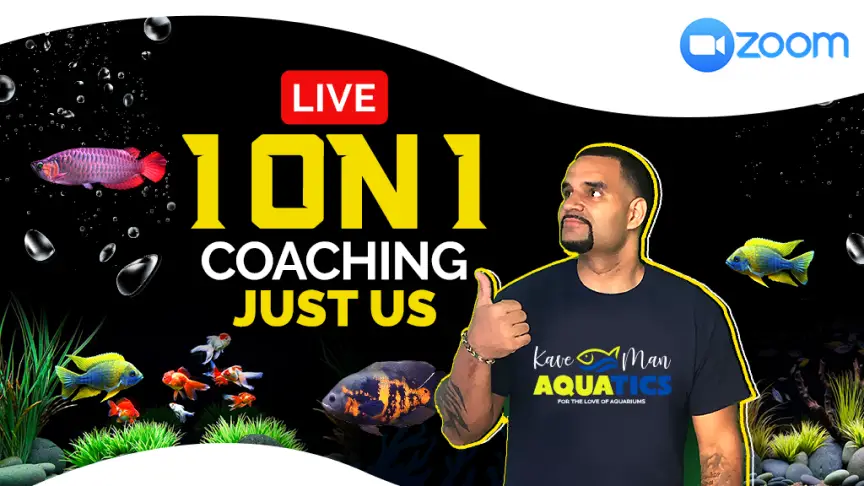
KaveMan Aquatics also offers an online video course, Keeping African Cichlids. If you feel that that’s not enough, we also offer 1-on-1 consulting services for that personal touch.
Nitrate Poisoning in Freshwater Aquarium Fish (+8 Easy Prevention Tips)
Nitrate poisoning is a silent killer — regardless of your experience level in your fishkeeping journey. Learn more on how you can save your fish, now!




